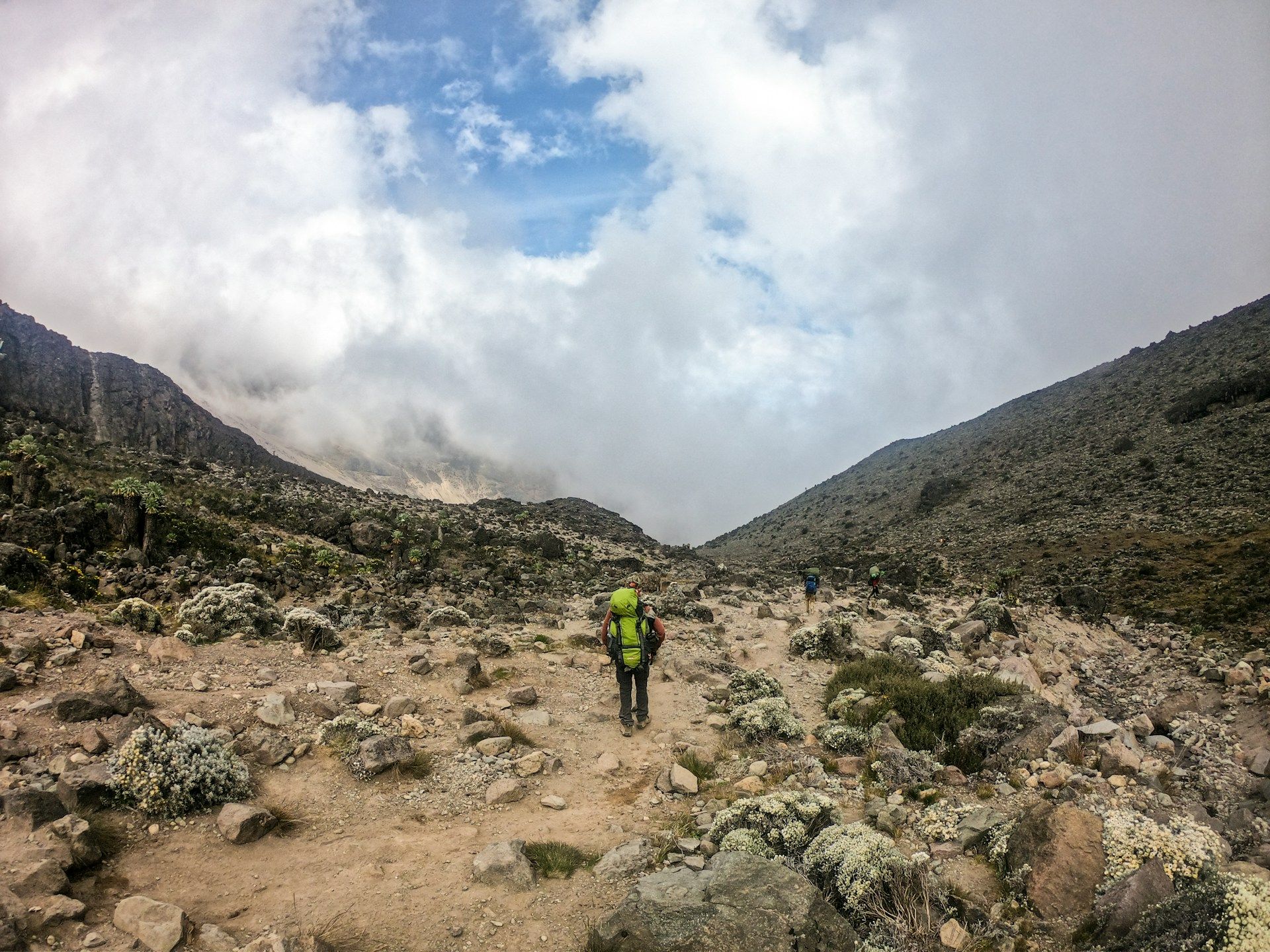Camping on Mount Kilimanjaro

Mount Kilimanjaro, standing tall at 5,895 meters (19,341 feet), is not just Africa's highest peak but a symbol of adventure, challenge, and natural beauty that draws thousands of climbers from around the globe each year. Its snow-capped summit, rising above the savannah of Tanzania, offers a unique trekking experience through five distinct ecological zones – from the lush rainforest at its base to the alpine desert and icy arctic conditions near the summit.
The allure of Kilimanjaro extends beyond its physical attributes, touching on the geological marvels that formed this standalone mountain and the rich cultural tapestry of the communities living in its shadow. Climbing Kilimanjaro is as much about the journey as it is about the destination. It's a path that leads through breathtaking landscapes, offering a chance to disconnect from the everyday and reconnect with the elemental forces of nature.
Camping on Kilimanjaro plays a pivotal role in this journey. It offers climbers a unique way to experience the mountain's diverse environments, providing a refuge to rest and reflect on the day's trek. This blog delves deep into what camping on Kilimanjaro entails, from the types of accommodations and facilities to the environmental and cultural considerations that make each step towards Uhuru Peak a meaningful adventure.
Types of Camping Accommodations
Kilimanjaro offers a mix of camping accommodations, primarily tented, except for the Marangu route, which features hut accommodations. The tent accommodations are divided into public campsites, available on routes like Machame, Lemosho, and Rongai, and private campsites, exclusive to climbers who book with operators offering customized services. Tents are typically provided for climbers and porters, with sleeping tents, dining tents, and support structures like kitchen tents forming the campsite layout.
Amenities and Facilities
Sleeping Arrangements
Climbers sleep in two-person tents, designed to withstand the mountain's harsh conditions. These tents are spacious enough for climbers and their gear, ensuring a comfortable night's sleep.
Dining Tents
Communal dining tents serve as the camp's social hub, where climbers gather for meals and briefings. Equipped with tables and chairs, these tents provide a comfortable setting for climbers to enjoy their meals and share stories.
Toilet Facilities
Toilet facilities vary across campsites. Basic campsites offer simple latrine-style toilets, while more advanced setups provide portable toilet tents for added comfort and privacy.
Communal Areas
Some campsites feature additional communal tents for socializing and relaxation, offering climbers a space to unwind and interact with their team and fellow adventurers.
Environmental Considerations and Practices
Climbing Kilimanjaro comes with a responsibility to preserve its pristine environment. Climbers are encouraged to follow Leave No Trace principles, minimizing their impact by carrying out all trash and respecting wildlife. Kilimanjaro National Park's regulations also mandate the use of eco-friendly practices, with porters playing a key role in managing waste and ensuring campsites are left clean.
Preparing for Your Camping Experience
Selecting the Right Gear
When preparing for Kilimanjaro, your gear will be your closest ally against the elements. Given the mountain's varied climates, from the warm, humid rainforest base to the freezing summit, choosing versatile and layerable clothing is crucial. Invest in quality, insulated, and waterproof outerwear, including a jacket, pants, and gloves. For nighttime temperatures that can dip below freezing at higher camps, a four-season sleeping bag rated for temperatures as low as -10°C (14°F) is essential. Pair this with an insulated sleeping pad for additional warmth and comfort against the ground's chill.
Footwear demands careful consideration; sturdy, waterproof, and broken-in hiking boots are a must to prevent blisters and provide support over uneven terrain. Supplement this with moisture-wicking socks and gaiters to keep debris out.
Don't overlook the importance of a reliable headlamp for early morning summit attempts, sunglasses with UV protection for the glaring sun, and a durable daypack for carrying personal items, snacks, and water on the trail.
Given the remote nature of the climb, packing a personal first aid kit equipped with bandages, antiseptic, blister plasters, and your regular medications is wise. Include sun protection and lip balm with a high SPF to guard against the intense equatorial sun.
High-Altitude Readiness: Acclimatization and Altitude Pills
Altitude sickness is a real concern on Kilimanjaro, with the rapid ascent to high elevations posing a risk for Acute Mountain Sickness (AMS), High Altitude Pulmonary Edema (HAPE), and High Altitude Cerebral Edema (HACE). Symptoms of AMS can include headaches, nausea, fatigue, and dizziness. To mitigate these risks, climbers are encouraged to choose routes that allow for gradual acclimatization, spending more days on the mountain to adjust to the altitude.
In addition to acclimatization strategies, altitude sickness pills, such as Acetazolamide (commonly known as Diamox), can be used to help prevent the onset of altitude sickness. Diamox works by acidifying the blood, which stimulates breathing, increasing the amount of oxygen taken in, and helping the body adjust faster to higher elevations. It is typically recommended to start taking Diamox 24 hours before ascent and continue for the first few days at altitude, or as prescribed by a healthcare provider.
It's crucial to consult with a medical professional before your trip to discuss the use of Diamox or any other altitude sickness medication, especially if you have pre-existing health conditions or are taking other medications. A healthcare provider can provide personalized advice and dosage recommendations based on your medical history and the specifics of your climb.

Comfort and Health Tips
Staying comfortable and healthy at high altitudes involves proper hydration, layering clothing for warmth, and acclimatizing to reduce the risk of altitude sickness. Listening to your body and communicating with your guides can enhance your camping experience and overall success on the mountain.
Cultural and Community Aspects of Camp Life
Camp life on Kilimanjaro fosters a sense of community among climbers, guides, and porters. Sharing meals and experiences under the African sky creates lasting bonds and deepens the appreciation for the local culture and the hardworking porter community, whose efforts make the climb possible.
Conclusion
Camping on Mount Kilimanjaro is more than just a place to rest; it's an integral part of the journey, offering climbers a chance to connect with nature, fellow adventurers, and the local culture. By choosing the right gear, respecting the environment, and embracing the communal spirit of the climb, adventurers can fully enjoy the unique experience of camping on the roof of Africa.
